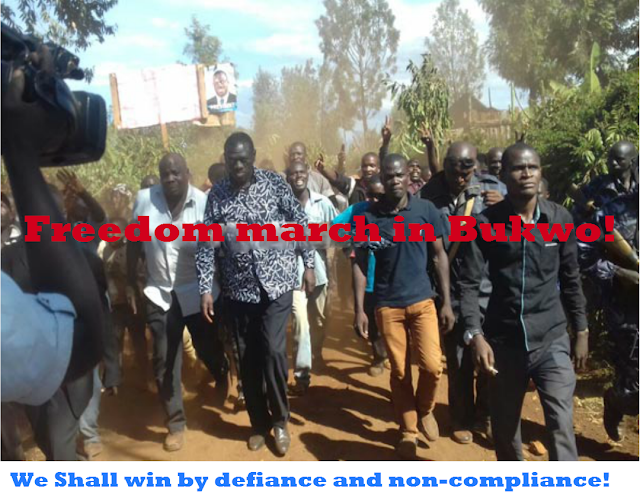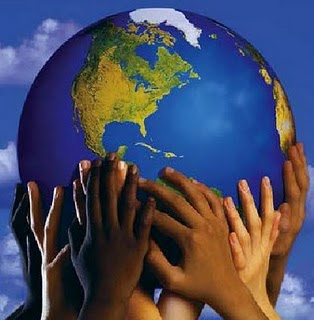Peaceful Defiance
Peaceful defiance or nonviolent action require a charismatic leader,historically we had Mohandas Gandhi in India, Martin Luther King, Jr.in USA,Nelson Mandela in South Africa and in Uganda the most appealing and charismatic leader is non other than Dr. Kizza Besigye.Therefore in order for the the struggle to be effective,the only tried and tested leader is Dr Besigye.
Nonviolent action (also sometimes referred to as people power, political defiance, and nonviolent struggle) is a technique of action for applying power in a conflict by using symbolic protests, noncooperation, and defiance, but not physical violence.
Nonviolence” is often used to mean many different phenomena, but generally refers to the absence of violence and to religious, moral, or ethical beliefs that reject violence.
Nonviolent action” is a technique of waging conflicts and is identified by the type of action employed. It does not require any specific ethical, moral, or religious beliefs to be used.
Nonviolent action is not to be equated with verbal or psychological persuasion, although nonviolent action may be used to apply psychological pressures to achieve attitude change. Nonviolent action, instead of just words, is a technique of struggle involving the use of social, economic, and political power, and the matching of forces in conflict.
Nonviolent action may involve:
1. Acts of omission—that is, people may refuse to perform acts that they usually perform, are expected by custom to perform, or are required by law or regulation to perform;
2. Acts of commission—that is, people may perform acts that they do not usually perform, are not expected by custom to perform, or are forbidden to perform; or
3. A combination of the two.
As a technique, therefore, nonviolent action is not passive. It is not inaction.
Nonviolent action is action that is nonviolent.
What are the applications of nonviolent action?
Nonviolent action can and has been used to:
• Dismantle dictatorships
• Provide an alternative to violence in extreme ethnic conflicts
• Challenge unjust social and economic systems
• Develop, preserve and extend democratic practices, human rights, civil liberties and freedom of religion
• Resist genocide
What are the methods of nonviolent action?
There are a multitude of specific methods of nonviolent action or “nonviolent weapons.” Nearly two hundred have been identified to date, and without doubt, scores more already exist or will emerge in future conflicts. Three broad classes of nonviolent methods exist:
1. Nonviolent protest and persuasion,
2. Noncooperation, and
3. Nonviolent intervention.
How does nonviolent action work?
Nonviolent action works by getting a population to withdraw its support and obedience from the opponents. By getting key groups to withdraw their consent, nonviolent action is able to remove the sources of power for a regime or opponent group.
These sources of power are:
1. Authority—the belief among the people that the regime or opponent is legitimate, and that they have a moral duty to obey it;
2. Human resources—the number and importance of the persons and groups that are obeying, cooperating, or providing assistance to the regime or opponent;
3. Skills and knowledge—needed by the regime or opponent to perform specific actions and supplied by the cooperating persons and groups;
4. Intangible factors—psychological and ideological factors that may induce people to obey and assist the regime or opponent;
5. Material resources—the degree to which the rulers control or have access to property, natural resources, financial resources, the economic system, and means of communication and transportation; and
6. Sanctions—punishments, threatened or applied, against the disobedient and noncooperative to ensure the submission and cooperation that are needed for the regime or opponent to exist and carry out its policies.
All of these sources of power, however, depend on acceptance of the regime or opponent, on the submission and obedience of the population, and on the cooperation of innumerable people and the many institutions of society. When this obedience, acceptance, and support are withdrawn, the regime or opponent can be severely weakened or toppled.
What are the ways that nonviolent action can produce change?
Nonviolent action operates by producing one or more of these four mechanisms of change:
1. Conversion—changes in attitude cause the opponents to voluntarily make concessions;
2. Accommodation—the opponents negotiate and compromise;
3. Nonviolent coercion—the opponents are weakened so much that they are forced to capitulate; and
4. Disintegration—the opponents are weakened to the point where their regime simply falls apart.
Nonviolent action does not depend on converting your opponents to willingly give in. It can produce powerful coercive effects and can force opponents to concede or can destroy their power.
Nonviolent action does not depend on the assumption that people are inherently “good”. The potentialities of people for both “good” and “evil” are recognized, including the extremes of cruelty and inhumanity.
People using nonviolent action do not have to be pacifists or saints, nor do they need to hold particular religious, moral, or ethical beliefs. Nonviolent action has predominantly and successfully been practiced by “ordinary” people all over the world, including by people who believed violence to be morally acceptable.
In nonviolent action, there is no assumption that the opponents will refrain from using violence against nonviolent actionists. The technique is designed to operate against violence when necessary and historically has been used against extremely violent and ruthless regimes.
There is nothing in nonviolent action to prevent it from being used for both “good” and “bad” causes, although the social consequences of its use for a “bad” cause are likely to differ considerably from the consequences of violence used for the same cause.
Nonviolent action is not limited to domestic conflicts within a democratic system. It has been widely used against dictatorial regimes, foreign occupations, and even against totalitarian systems.
Nonviolent action does not always take longer to produce victory than violent struggle would. In a variety of cases, nonviolent struggle has won objectives in a very short time—in as little as a few days. Other struggles may require considerably more time. The time taken to achieve victory depends on diverse factors—primarily the strengths, strategy, and tenacity of the nonviolent struggle group.
source:http://www.aeinstein.org




Good writeup
ReplyDelete